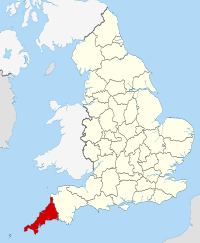Text is taken from The Saint Andrew Daily Missal,
unless otherwise stated.
The Vigil of All Saints.
31 October.
Simple.
Violet Vestments.
Iona Abbey, Scotland.
Image: SHUTTERSTOCK
The most illustrious Martyrs had at Rome, from the 4th-Century A.D., their Basilicas, where was Celebrated each Year the Anniversary of their death, or, rather, their birth in Heaven.
At that time, a number of Masses were prescribed without any fixed day in honour of those who had no public recognition. When, later, the names of Saints, who were not Martyrs, were introduced into The Ecclesiastical Calendar, a more Universal character was given to such Masses.
It is thus that, in the 8th-Century A.D., The Gregorian Sacramentary indicates among The Common Masses without a date: The Mass in Honour of All Saints.
Fixed in the following Century on 1 November, it became The Mass of All Saints' Day, for which we are this day prepared by a Vigil.
This explains why The Mass of The Vigil, as well as that of The Feast, contains extracts from The Masses of The Common of Martyrs.
Mass: Judicant sancti gentes.
Gloria: Is not said.

The Church Triumphant.
The Church Militant.
The Church Suffering.
Illustration: UNA VOCE OF ORANGE COUNTY
who reproduce Text and Illustrations from The Saint Andrew Daily Missal
with the kind permission of ST. BONAVENTURE PUBLICATIONS
Artist: René de Cramer.
“Copyright Brunelmar/Ghent/Belgium”.
Used with Permission.
The following Text is taken from THE SAINT LAWRENCE PRESS LTD
The Vigil of All Saints is of Simple Rite and its Liturgical Colour is Violet. As with all Simple Rite Vigils, The Office runs from Mattins to None.
At Mattins, The Invitatory, Hymn, Antiphons, Psalms, Versicle and Response are from The Psalter for Friday. The Lessons, Proper to The Vigil, in The Nocturn, are a Homily of Saint Ambrose from The Common of Several Martyrs.
The Responsories are from The Friday of The Fifth Week of October. The Te Deum is not sung. The Second Scheme of Lauds for Friday is sung with Psalms 50, 142, 84, “Domine, audivi auditionem tuam”, and 147.

The Office Hymn is “Aeterna cæli gloria”. After the Antiphon on the Benedictus has been repeated, the Ferial Preces are sung, with the Choir kneeling. After The Collect of The Vigil, The Suffrage of The Saints is omitted (c.f. pre-1911-1913 praxis, when The Suffrages were sung).
At Prime, the Psalm displaced from Lauds by The Miserere is added to The Psalmody of The Day: Pss. 21(i), 21(ii), 21(iii), and 98. Both The Dominical and Ferial Preces are sung, with the Choir kneeling. At the other Hours, the short series of Ferial Preces are sung, again with the Choir kneeling, before The Collect of The Vigil.
Mass is sung after None. Following the normal rules for Vigils, four Candles are placed on the Altar, in contrast with two on ordinary Ferial Days. The Deacon and Sub-Deacon wear Violet Dalmatic and Tunicle, not Folded Chasubles. The Ferial Tone is used for The Orations and for The Preface and Pater Noster.

There is no Gloria. The Second Collect is of The Holy Ghost, “Deus, qui corda”, The Third Collect is “Ecclesiæ”. As it is a “Kneeling Day”, the Choir kneels for the Prayers and from the Sanctus until “Pax Domini”. As the Gloria is not sung, the dismissal is “Benedicamus Domino”.
Vespers are First Vespers of The Feast of All Saints, with a corresponding Colour change to Festive White. The Office is Proper and the Antiphons “Vidi turbam magnam”, etc, are sung, Doubled, with Pss. 109, 110, 111, 112 and 116. The Office Hymn is “Placare, Christe, servulis”. At Compline, The Dominical Psalms are sung.
In the “Liturgical Books of 1962”, The Vigil of All Saints has been abolished. Today is kept as a IV Class Ferial “Green' Day”. Mass is of Pentecost XX, there is a single Collect. Although The Gloria is not sung, “Ite missa est” is The Dismissal.






































